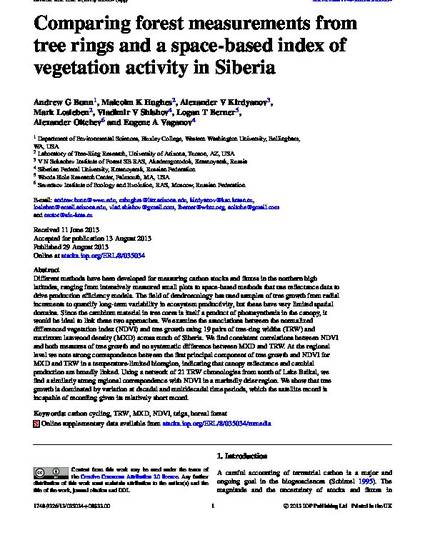
- Carbon cycling,
- TRW,
- MXD,
- NDVI,
- Boreal forest
Different methods have been developed for measuring carbon stocks and fluxes in the northern high latitudes, ranging from intensively measured small plots to space-based methods that use reflectance data to drive production efficiency models. The field of dendroecology has used samples of tree growth from radial increments to quantify long-term variability in ecosystem productivity, but these have very limited spatial domains. Since the cambium material in tree cores is itself a product of photosynthesis in the canopy, it would be ideal to link these two approaches. We examine the associations between the normalized differenced vegetationindex (NDVI) and tree growth using 19 pairs of tree-ring widths (TRW) and maximum latewood density (MXD) across much ofSiberia. We find consistent correlations between NDVI and both measures of tree growth and no systematic difference between MXD and TRW. At the regional level we note strong correspondence between the first principal component of tree growth and NDVI for MXD and TRW in a temperature-limited bioregion, indicating that canopy reflectance and cambial production are broadly linked. Using a network of 21 TRW chronologies from south of Lake Baikal, we find a similarly strong regional correspondence with NDVI in a markedly drier region. We show that tree growth is dominated by variation at decadal and multidecadal time periods, which the satellite record is incapable of recording given its relatively short record.
Available at: http://works.bepress.com/andrew_bunn/7/
